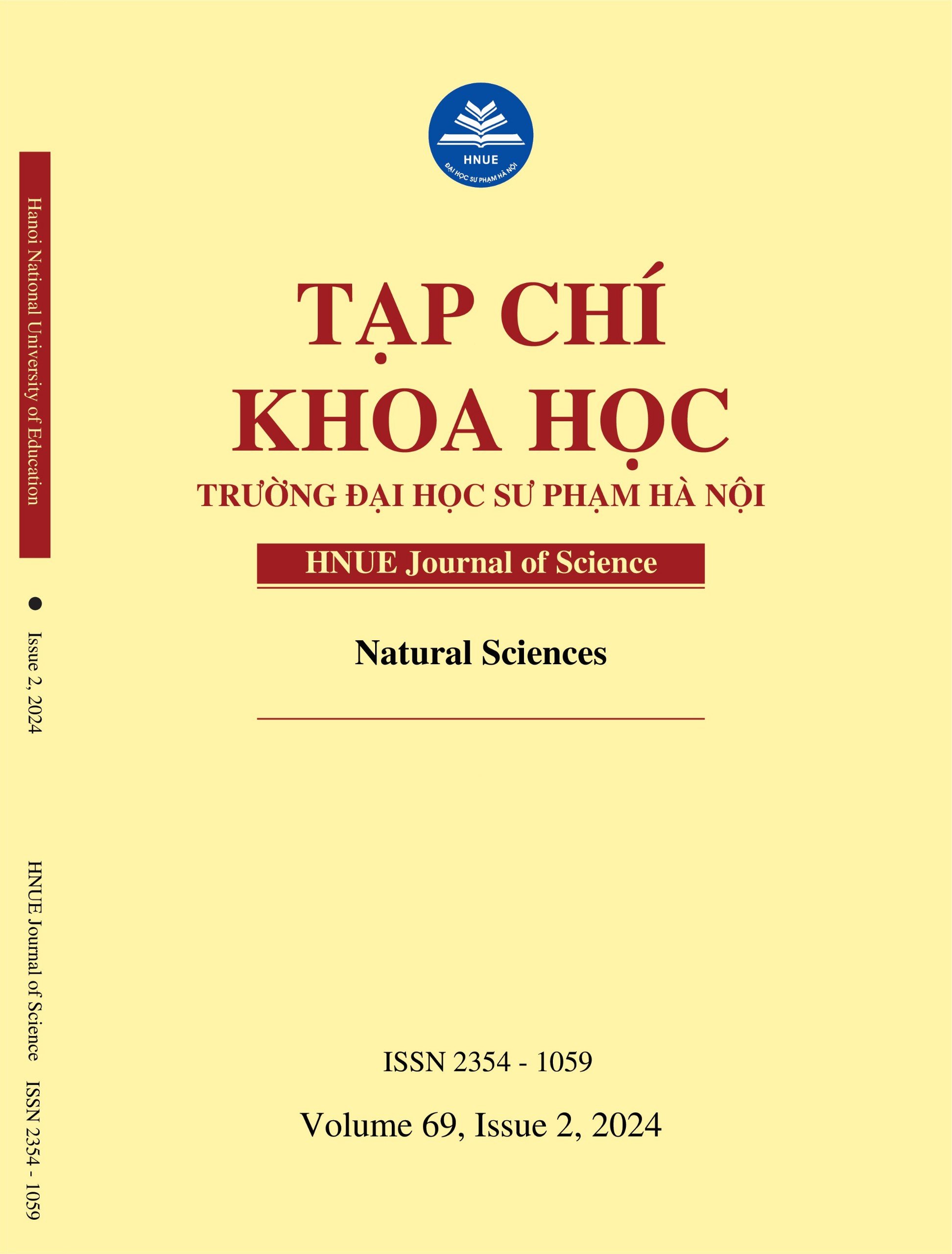STUDY ON SELF-DIFFUSION IN ALLOY AuCuSi WITH FCC STRUCTURE: DEPENDENCE ON TEMPERATURE, PRESSURE, CONCENTRATION OF SUBSTITUTIONAL ATOMS, CONCENTRATION OF INTERSTITIAL ATOMS AND STRAIN
DOI:
https://doi.org/10.18173/2354-1059.2024-0021Keywords:
AuCuSi, self-diffusion, strain, binary alloy, ternary alloy, interstitial atom, substitutional atom, activation energy, pre-exponential factor, self-diffusion coefficientAbstract
This article presents a self-diffusion theory, including analytical expressions for activation energy, pre-exponential factor, and self-diffusion coefficient, dependent on temperature, pressure, the concentration of substitutional atoms, the concentration of interstitial atoms, and strain for substitutional and interstitial ternary alloys with the FCC structure, based on the statistical moment method (SMM). The theoretical results are applied to numerical calculations for the AuCuSi alloy. The SMM numerical results for AuCuSi are compared with those for AuSi, AuCu, and Au. The variation of self-diffusion quantities with temperature and strain in AuCuSi follows the same patterns as in AuCu, AuSi, and Au. The variation with the interstitial atom concentration in AuCuSi follows the same pattern as in AuSi, while the variation with the substitutional atom concentration follows the same pattern as in AuCu. The SMM numerical results for Au's self-diffusion quantities agree well with experimental data and other calculation results. Other SMM numerical results for self-diffusion quantities are novel and predict future experimental outcomes.
References
[1] Rice SA, (1958). Dynamical theory of diffusion in crystals. Physical Review, 112, 804-811.
[2] Manley OP and Rice SA, (1960). Dynamical theory of diffusion in crystals. Physical Review, 117(3), 632.
[3] Jeffery RN and Lazarus D, (1970). Calculating activation volumes and activation energies from diffusion measurements. Journal of Applied Physics, 41, 3186-3187.
[4] Aziz MJ, (1997). Thermodynamics of diffusion under pressure and stress: Relation to point defect mechanisms. Applied Physics Letters, 70(21), 2810-2812.
[5] Aziz MJ, (1998). Pressure and stress effects on diffusion in Si. Defect and diffusion Forum, 153-155, 1-10.
[6] Kuznetsov AY, Cardenas J, Schmidt DC, Svenson BG, Hansen JL and Larsen AN, (1999). Sb-enhanced diffusion in strained Si1-xGex: Dependence on biaxial compression. Physical Review B, 59(11), 7274-7277.
[7] Cherepanov V and Voigtlander B, (2004). Influence of material, surface reconstruction, and strain on diffusion at the Ge (111) surface. Physical Review B, 69, 1253311-1253318.
[8] Johansson J and Toxvaerd S, (2004). Ad atom diffusion on strained (111) surfaces: A molecular dynamics study. Physical Review B, 69(23), 233401.
[9] Lee AY, Kim SY, Jiang H, Kim YD, Spieckermann S, Wilde W, Eckert J and Lee MH, (2020). Strain perceptibility of elements on the diffusion in Zr-based amorphous alloys. Scientific Reports, 10, 4575.
[10] Nagase S. and Matsumoto R., (2021). Volumetric strain dependence of quantum diffusion of hydrogen in bcc iron. The Iron and Steel Institute of Japan (ISIJ) International, 61(4), 1294-1299.
[11] Hung VV, Tich HV and Masuda-Jindo K, (2000). Study of self-diffusion in metals by statistical moment method: Anharmonic effects. Journal of the Physical Society of Japan, 69(8), 2691-2699.
[12] Hoc NQ, Tinh BD, Vinh DQ and Viet LH, (2016). Diffusion of interstitial atoms in interstitial alloys FeSi and FeH with BCC structure under pressure. The Metropolitan University’s Journal of Science, Natural Science and Technology, 8, 48-56.
[13] Hoc NQ, Vinh DQ, Viet LH and Phuong NV, (2016). Study on diffusion theory of interstitial alloy AB with BCC structure. Journal of Science of HNUE, Natural Sciences, 61(4), 3-9.
[14] Hoc NQ, Hien ND and Nhung NH, (2020). Study on diffusion theory of substitutional alloy AB with interstitial atom C and BCC structure. HNUE Journal of Science, Natural Sciences, 65(3), 31-38.
[15] Hoc NQ, Loan PTT, Viet NT and Le NN, (2020). The diffusion in FCC binary interstitial alloy. HNUE Journal of Science, Natural Sciences, 65(10), 18-23.
[16] Hung VV, Thanh DD and Hoa NT, (2007). Effect of stress on diffusion in metals. HNUE Journal of Science, 1, 13-18.
[17] Hoc NQ, Hien ND, Hoa NT, Huong LL and Le NN, (2022). Diffusion occurs in metals Au, Cu, and interstitial alloys AuSi, and CuSi. HNUE Journal of Science, Natural Sciences, 67(1), 27-37.
[18] Magomedov MN, (1987). On calculating the Debye temperature and the Gruneisen parameter. Zhurnal Fizicheskoi Khimii, 61(4), 1003-1009 (in Russian).
[19] Gatos HC and Kurtz AD, (1954). Determination of the self-diffusion coefficients of gold by autoradiography. Journal of Metal, 6, 616-619.
[20] Makin SM, Rowe HA and Leclaire AD, (1957). Self-diffusion in gold. Proceedings of the Physical Society B, 70(6), 545-553.
[21] Okkerse B, (1956). Self-diffusion of gold. Physical Review, 103(5), 1246-1249.
[22] Dickerson RH, (1954). Effect of hydrostatic pressure on the self-diffusion rate in single crystals of gold, University of Arizona.







